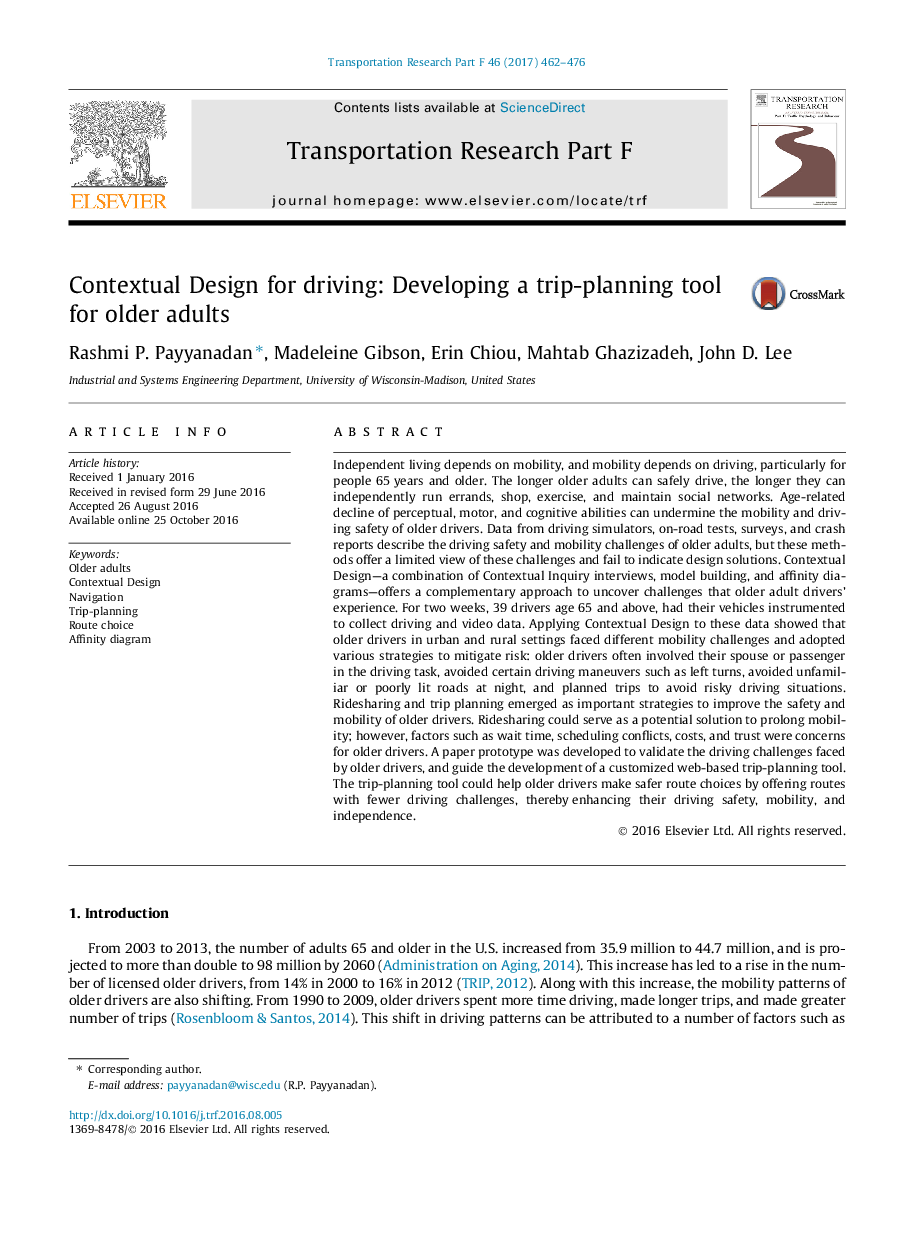| کد مقاله | کد نشریه | سال انتشار | مقاله انگلیسی | نسخه تمام متن |
|---|---|---|---|---|
| 5037392 | 1370219 | 2017 | 15 صفحه PDF | دانلود رایگان |
- A Contextual Design approach was used to identify the driving safety needs and challenges of older drivers.
- Contextual Design revealed that driving was conducted as a team task when passengers were present especially their spouse.
- Driving safety strategies involved avoiding difficult driving maneuvers such as left turns and avoiding risky driving situations such as travelling on unfamiliar or poorly lit roads at night.
- Ridesharing and trip planning emerged from the Contextual Design process as important strategies for improving the driving safety and mobility needs of older drivers.
- A trip-planning tool was developed for older drivers to address their driving preferences and challenges.
Independent living depends on mobility, and mobility depends on driving, particularly for people 65 years and older. The longer older adults can safely drive, the longer they can independently run errands, shop, exercise, and maintain social networks. Age-related decline of perceptual, motor, and cognitive abilities can undermine the mobility and driving safety of older drivers. Data from driving simulators, on-road tests, surveys, and crash reports describe the driving safety and mobility challenges of older adults, but these methods offer a limited view of these challenges and fail to indicate design solutions. Contextual Design-a combination of Contextual Inquiry interviews, model building, and affinity diagrams-offers a complementary approach to uncover challenges that older adult drivers' experience. For two weeks, 39 drivers age 65 and above, had their vehicles instrumented to collect driving and video data. Applying Contextual Design to these data showed that older drivers in urban and rural settings faced different mobility challenges and adopted various strategies to mitigate risk: older drivers often involved their spouse or passenger in the driving task, avoided certain driving maneuvers such as left turns, avoided unfamiliar or poorly lit roads at night, and planned trips to avoid risky driving situations. Ridesharing and trip planning emerged as important strategies to improve the safety and mobility of older drivers. Ridesharing could serve as a potential solution to prolong mobility; however, factors such as wait time, scheduling conflicts, costs, and trust were concerns for older drivers. A paper prototype was developed to validate the driving challenges faced by older drivers, and guide the development of a customized web-based trip-planning tool. The trip-planning tool could help older drivers make safer route choices by offering routes with fewer driving challenges, thereby enhancing their driving safety, mobility, and independence.
Journal: Transportation Research Part F: Traffic Psychology and Behaviour - Volume 46, Part B, April 2017, Pages 462-476
